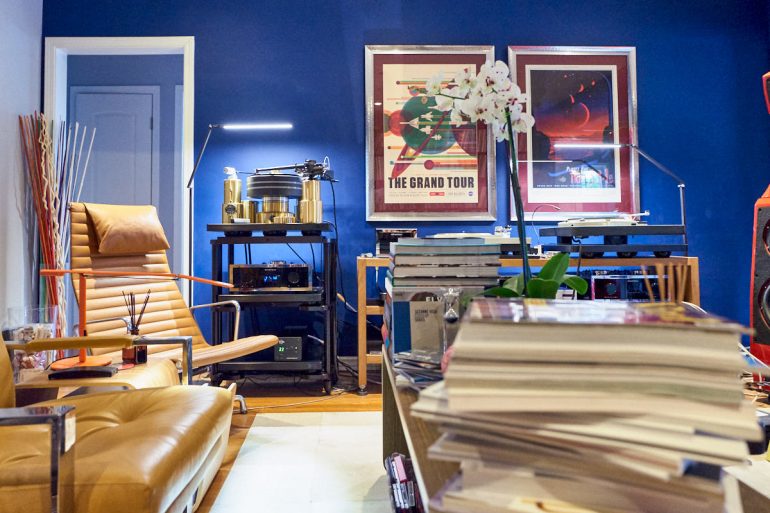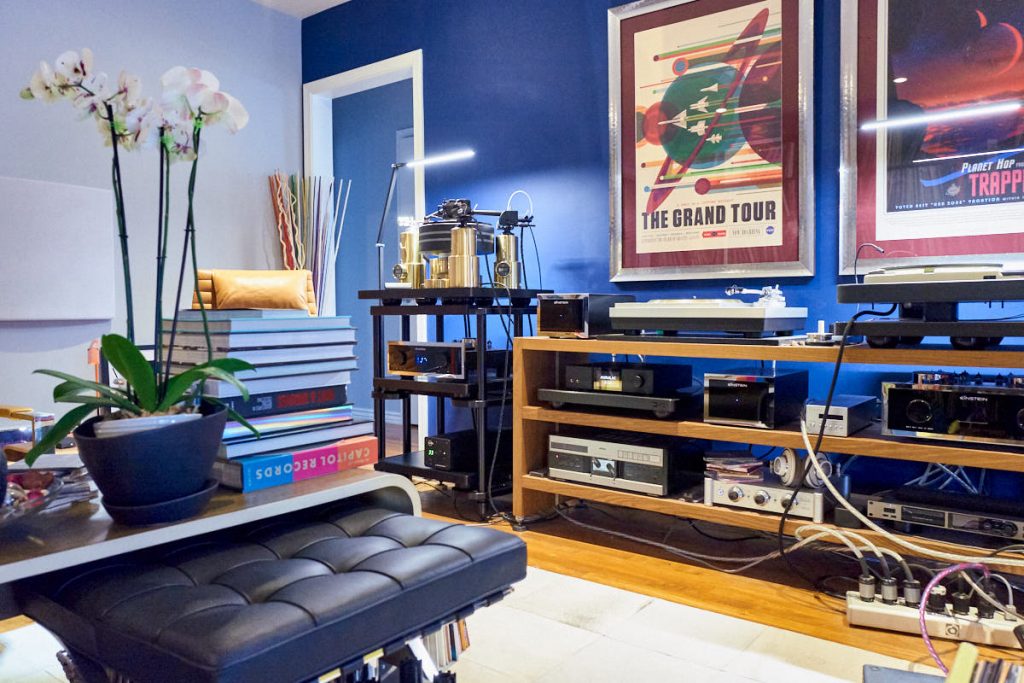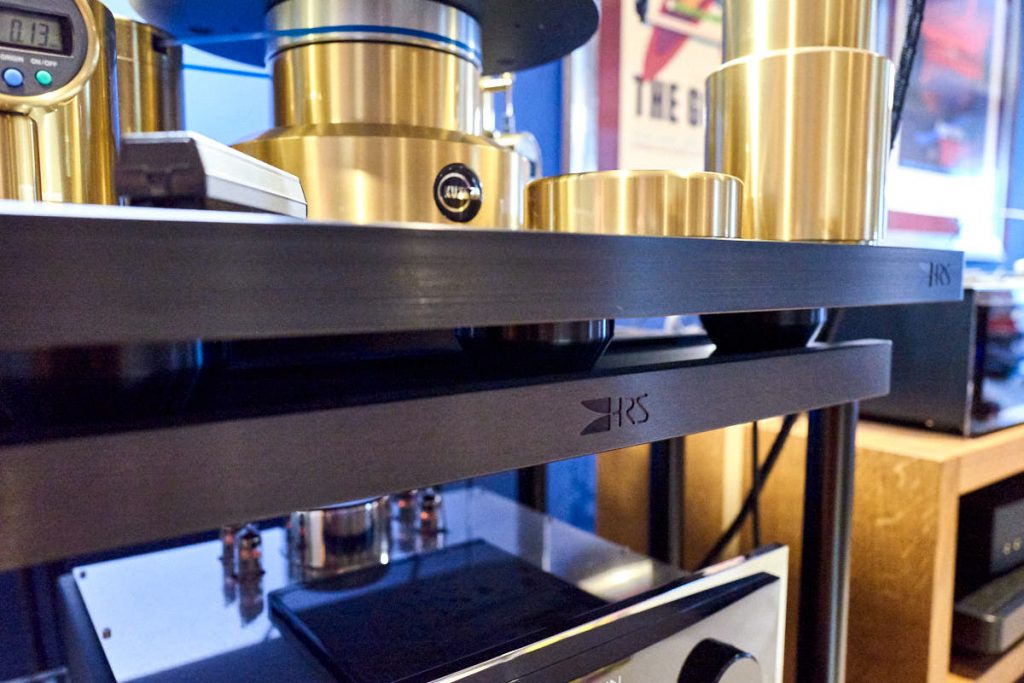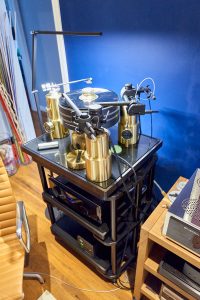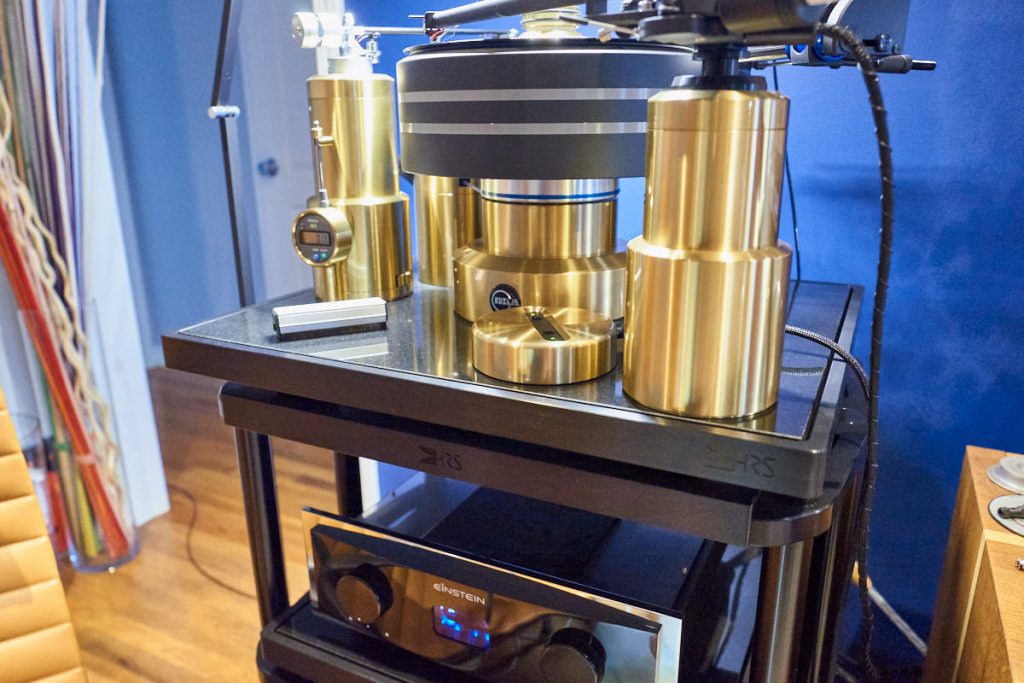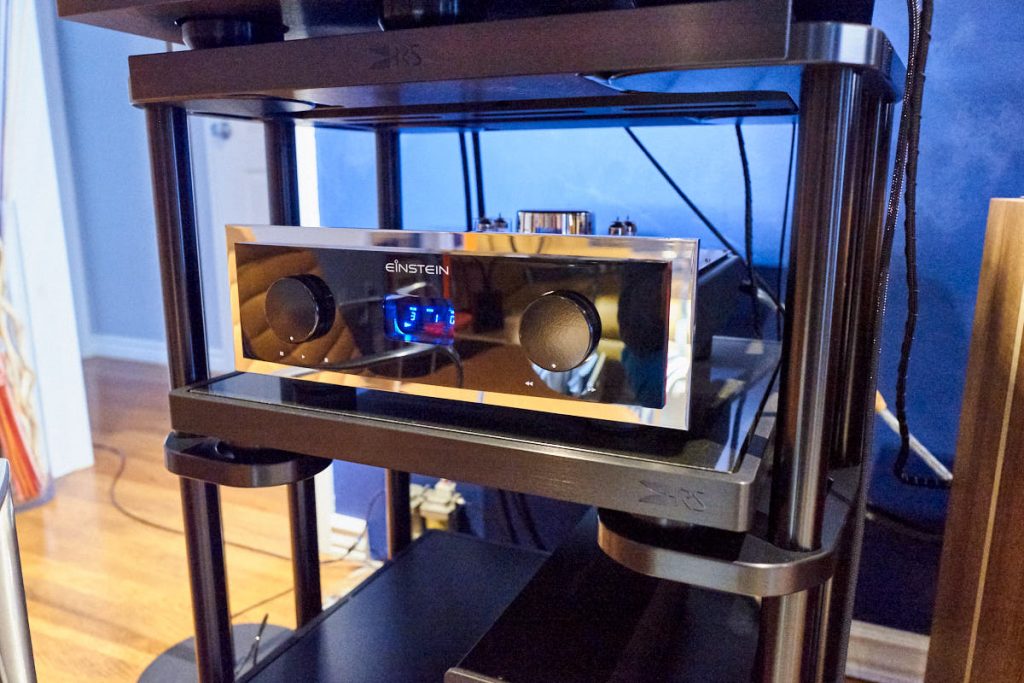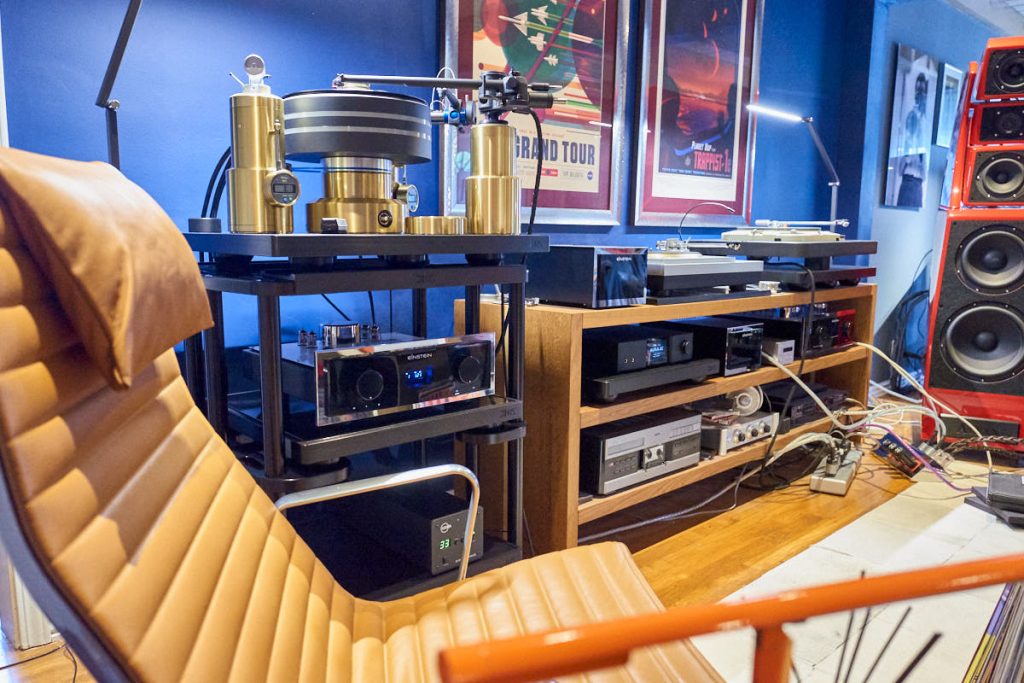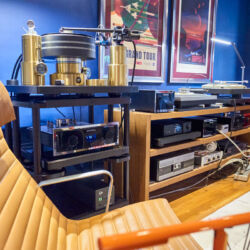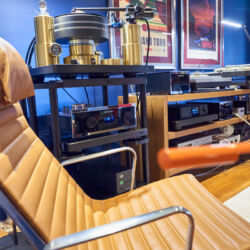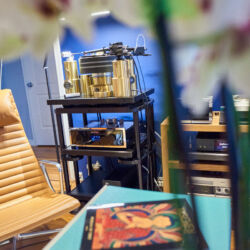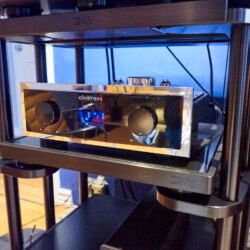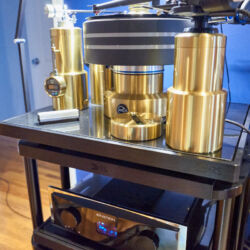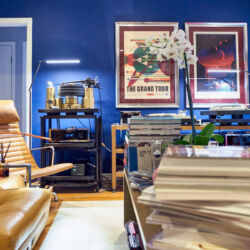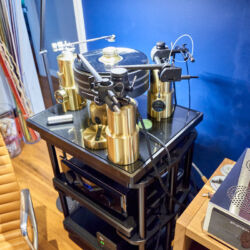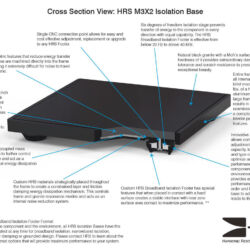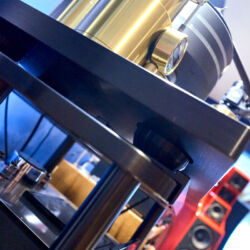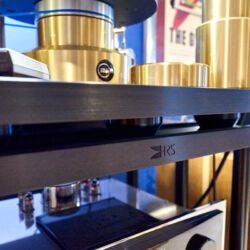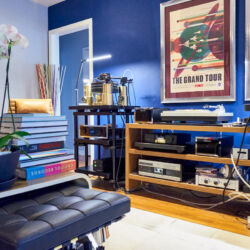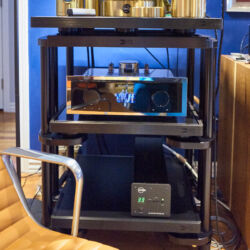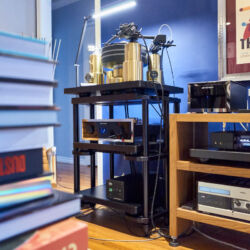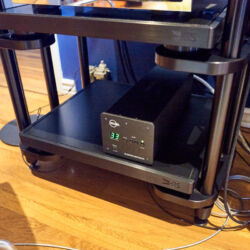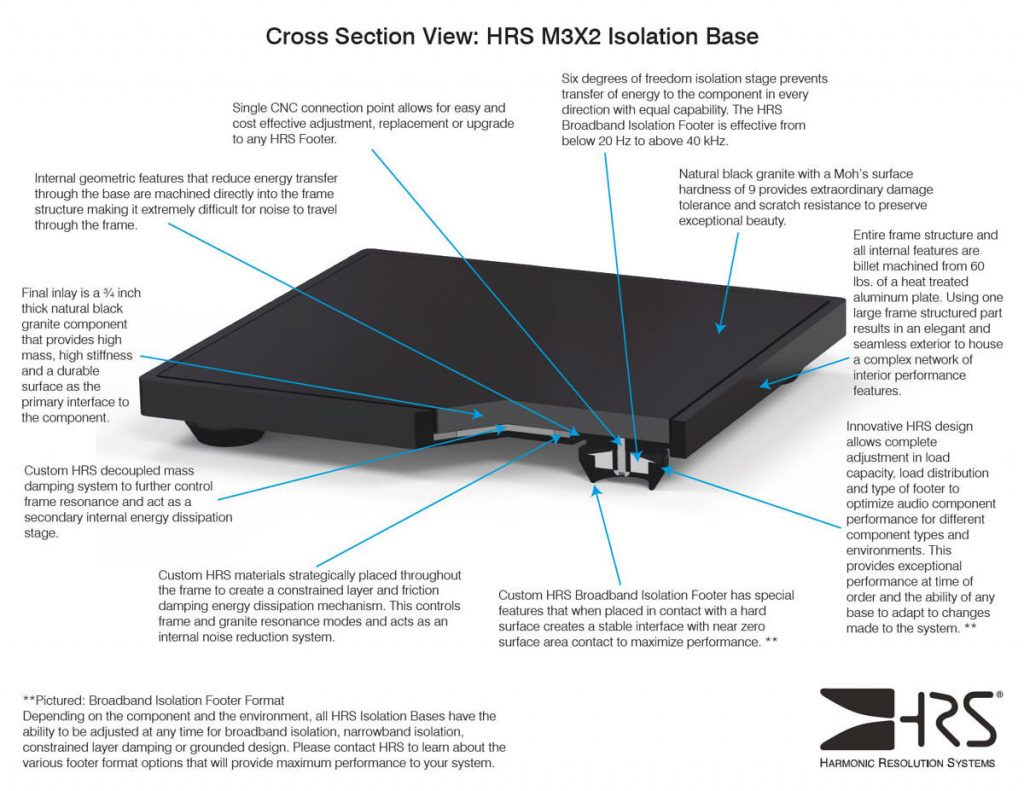HRS SXR rack, M3X2 and S3 isolation base review
My history with HiFi component racks is perhaps most closely matched to that of my quest to understand and learn HiFi cable design and theory, neither of which, might I add, were something I really paid much attention to when first I spelunked into this HiFi journey.
Photos: Danny Kaey
Frankly, the allure of cables or racks never really reached boiling point until I had my first real high-end HiFi, ca. 2003. Fast forward a decade-ish and a year here or there, and we arrive at today’s state of the union at chez K: indeed, HiFi racks (and cables) should not only be given mandatory considerations when choosing your HiFi, they in fact, ought to be valued as part of the component list in first place.
Following my decade plus experiences with different types of racks ranging from solid steel to wood to carbon fiber, to acrylic to some combination thereof, I always felt that even as some of these racks produced audible benefits, they all somewhat missed the mark as a genuine solution, whereby solution implies that said rack system would allow for easy changes, adjustments or extensions (say from a single wide triple height to a double wide, etc.). In reality, none of the racks I had ever used made this easy or even possible. You can’t take a wood rack to a carpenter and have it reconfigured; adjusting a purpose-built steel rack requires more than just loosening a bolt here or there; and carbon fiber? Well, let’s leave that for another day.
HRS was a company I had been admiring for some time: seeing Mike Latvis work his HiFi show magic and always seeing HRS associated with only the best sounding of systems, I knew instinctively that he was on to something. When, a few years later, I purchased an HRS M3X base for my Brinkmann Balance, a combination that Helmut Brinkmann has been raving over for as long as I can remember, it became very clear that Mike Latvis and his team had indeed developed something very special. In fact, it was the first purpose-built base which had completely eliminated footfall and feedback loops I had been having major issues with in my home. Having tried just about everything from vibration absorption cups to isolation devices to other bases, I grew frustrated since none of them seemed to work. The HRS M3X? Completely eliminated the problem. No, seriously. Immediately following this literal revelation, I had purchased M3X bases for all of my other components and even though I was using these without an HRS rack, the sound profited tremendously from just the base upgrades. No matter the component, including various digital and analog sources, all benefited from a dramatically lowered noise floor, better dynamics; I was smitten indeed. The combination of M3X and my solid wood based, built in Germany, Tabula Rasa rack seemed to do the trick.
Then, in late 2017, I received my Kuzma XL DC with 3 arm pods. Clocking in at some 240-ish pounds, it dwarfed the mighty Brinkmann Balance in just about every way. Even though my existing 21×23” M3X base / Tabula Rasa rack was doing the trick, I knew – Mike and his team no doubt sending me subliminal messages – that I could squeeze out even greater performance by adding a dedicated HRS SXR rack and a custom built, larger footprint 21×25” M3X base. Given I would still have two additional shelves left, a second source – my Einstein The Last Record Player (CD player) – and perhaps the Kuzma’s power supply would also fit and benefit from the SXR rack system. A phone call to Mike solved the rest and the SXR rack with two M3X2 shelves and an S3 shelf were dispatched. Setup for the SXR is straight forward and simple, which is to say that you can’t help notice the impeccable engineering and quality HRS products exude. Take for example the threaded spike level system on each of the four columns: frankly, I have never seen a more precisely machined set of threads and corresponding cups, which make leveling the rack a literal breeze. I opted to add the SXR Solid Brace insert for the 21×25” top M3X2 shelf which would add further mass, stiffness and absorption qualities to not only the top shelf, but the rest of the rack as well. Further, adding additional SXR Solid Brace inserts across the remaining two shelves at once or over time, yields the SXR Signature rack configuration, which according to HRS, gets you closer still to HRS’ top of the line MXR rack system. Thus, a customer could start off with say a two shelf SXR and work their way up to a five shelf SXR Signature rack during any point of their HRS journey. Modularity hits home. Cost effective and only increasing the value add, I find this one of the most appealing performance features of HRS rack systems in general.
With no other setup to perform – the SXR comes completely preconfigured to your specs in a wooden crate – it was time to assemble the Kuzma and place the Einstein CD player on the SXR. The all black anodizing (also available in silver), the dark grey polish of the M3X2 granite inserts, the genuinely best in class craftsmanship show off an overall quality fit and finish that is state of the art. Sitting – standing! – next to my Tabula Rasa triple wide rack, the SXR adds a striking visual esthetic to music room 1; so much so, that – spoiler alert! – I am already mulling adding a second SXR rack for music room 2, though more on that later. Whereas adding the Einstein CD player was accomplished with minimal fuss, setting up the Kuzma proved a bit more involving. Given that the 21×25” M3X2 has 6 isolation footers (footers come in matched sets, corresponding to the weight of the component to be placed on the base), each with their own suspension design, you have to take your time to setup the Kuzma XL DC in such a way that the base remains level once all 3 arm pods are moved into place, especially when one of the arms holds the Kuzma Airline air bearing toneram which requires an absolutely level platform to perform. Thus, the next half hour or so was spent moving each of the arm pods and the XL’s DC motor in such a way as to ensure that the shelf was perfectly level. That said, I was all set and done within an hour and ready to consume my first track.
Mike Latvis views isolation as the key job his rack systems and shelves have to accomplish. Isolation from airborne, structural and internal energies is key to performance and every part of an HRS system is designed from the outset to combat these problems. Here, the SXR rack acts to provide a structurally rigid and very solid isolation platform; the M3X2 and S3 bases are then decoupled from the rack via their cupped, radial suspension footers. At each level of the system, Mike and team calculated the exact, precise mechanical interactive elements necessary to achieve the desired results. You see, Mike views isolation as not just one singular element that will do the trick; instead, it’s careful consideration for multitudes of different engineering solutions that will then create the best possible isolation platform – with scale.
I place a record on the Kuzma, cue up the Airline arm and lower the stylus: silence. A faint pop. A tiny amount of background noise. A quick press on the Einstein remote raises the volume to pretty loud. Driving Wilson’s Alexx is my reference pair of Einstein The Silver Bullet OTL amplifiers. Then suddenly, the opening salvo of Chad Kassam’s first ever record reissue, Le Cid Ballet Music, released in 1992. My friend, ear-witness to the ceremony, startled to his bone, literally jumps from the Eames aluminum group chair. He turns his head, looks at me and throwing a massive grin gives me a firm two thumbs up. About a minute into the cut, I turn the volume back down to merely loud and, equally stunned, proclaim this to be the most realistic I had ever heard this particular piece of symphonic ecstasy. Having already anticipated a knockout performance the second the Transfiguration Proteus stylus hit the record, I knew that this was a giant leap from the very same setup that just a week prior had been sitting on another M3X firmly planted on the Tabula Rasa rack. Shocked at the initial results, I didn’t even let Le Cid Ballet Music end, instead, I lifted the Airline arm and placed Yello’s 12” 45rpm, ca. 12 min long run of The Race on the platter. You heard it a million times. A knock-out hit for the Swiss duo, The Race is a complex piece of electronic layering, Pro-Tooling and mastering. I know what this can sound like on non-optimized setups: slow, smeared, even shrill with overblown bass. Following the occasional groove tick, the sound of a roaring race car starts appearing far left field – far beyond the speaker and wall limit – growing louder and louder, literally roaring through your living room, only to fade to the right side just as ferociously as it had appeared. Then, the percussive elements begin as the rest of the 12-minute single starts to take shape. Dieter Meier’s supremely sublime baritone voice hits with just the right depth, weight and tone. Even when the Kuzma’s M3X was on my Tabula-Rasa rack, the detail retrieval simply wasn’t what it is now. No way. Yes, all of the same qualities were easily identifiable, but the level of contrast, the shear dynamic explosiveness, bass depth and finely positioned percussive cues simply didn’t have the impact as they do with the Kuzma’s M3X2 placed on the SXR rack.
Not to be outdone, I cued up Marian Hill’s Unusual in the Einstein The Last Record Player. A no holds barred reference, and in all likelihood probably the last CD player I’ll ever buy, the Einstein does one thing and one thing only: it plays CDs. No USB input, no ethernet, no Toslink, nada. A CD is what you can play and 16/44 sound is what you will get. The build and sound quality is typical Einstein, which is to say fuss-free, extended and very open sounding. Placed on the SXR, the match is quite striking from a visual perspective. Sonically, it’s a whole new CD player, even as I was intimately familiar with it. I always felt that high-speed spinning disc drives need special isolation – imagine the rotational energies and forces being transferred internally from the disc drive to the electronics; a proper isolation device ought to do wonders here, and with the SXR / M3X2 combo, it in fact does just that. Playing the aforementioned Marian Hill track, Subtle Thing, you are presented with downtempo, massively powerful bass lines that – provided you have full range sound – couple the room with deep, electronically generated dubstep bass. Added to the mix are sparingly used finger snaps, layers of synth and of course Marian Hill’s sensual, delicate, yet powerful voice. The presence here is nothing short of stunning, the Wilson’s generating so much powerful bass, whilst at the same time properly conveying the delicacy of Marian Hill’s vocals. Delicately resolved, the percussive elements form a singular part of the track, yet each individual color palette – though I have to doubt that much of what you are hearing are actual instruments – is clearly visible across the positively Cinemascope soundstage. What’s not to love?
The team behind HRS, led by Mike Latvis, is one that places musical integrity above all else: pace, rhythm, timing, are the essential components of what we traditionally perceive as music. The benefits of an HRS rack – the SXR reviewed here, though this speaks to any of the racks they manufacture – are multifold. As with everything, the carefully designed individual components and systems make up that which becomes a genuine isolation solution that also happens to be modular, can scale to size up or down and to boot is among the most simple to configure as an end user. To put succinctly, no other rack / isolation system I had used in the past was this well designed, engineered and implemented to its logical conclusion. Already on my list of upgrades are additional SXR Solid Brace inserts for the Einstein The Last Record Player / M3X2 shelf and the S3 shelf which houses the Kuzma power supply. Finally, you better believe that as inexplicable as it may seem, placing the Kuzma power supply on the S3 base of the SXR, in fact proves to be an audible – though subtle – improvement. Don’t ask me why, I just report on what I hear. Even as the S3 base leaves some of the higher-end details of the M3X2 out to make it more affordable overall, the basic isolation principles HRS advocates for are all still present. Some things just need to be taken at face value.
Kudos then to the HRS team, as they created the single best rack and isolation system I have come across. My advice would simply be this: if you can’t yet go with the SXR, start with HRS component shelves as I did and work your way up the ladder. Guaranteed performance wins are what you will net. An absolute recommendation – I couldn’t resist keeping the SXR and promptly sent a check to Mike – case closed, though by no means permanently. A+++


